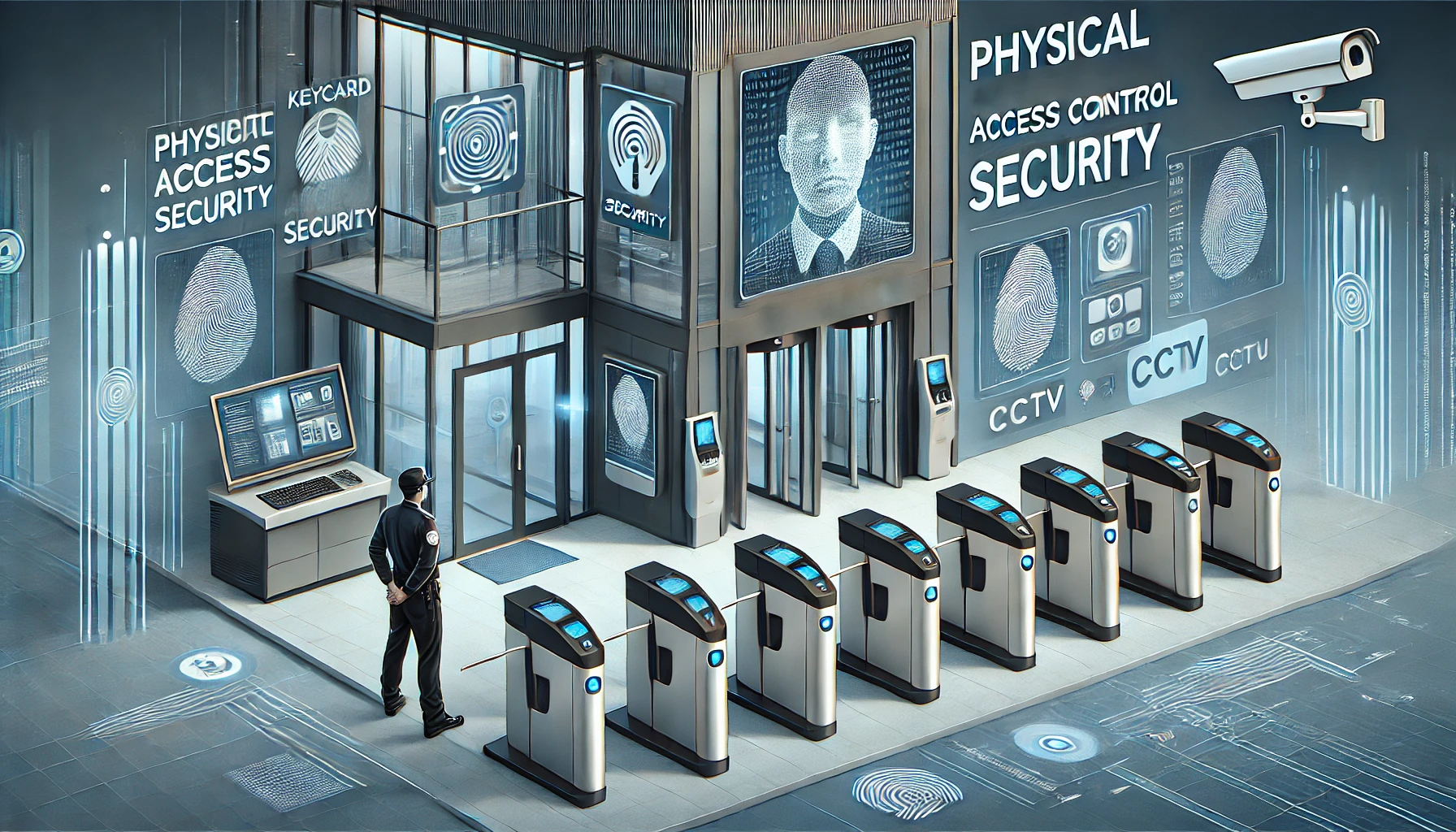When it comes to securing your property, digital and physical access control systems go hand in hand. While many businesses focus on cybersecurity, physical access control — the ability to regulate who enters your premises — is just as critical. To ensure that your facility’s security measures are up to par, you need a physical access control security assessment.
But what exactly does this process involve, and why is it essential?
Let’s break it down.
What is a Physical Access Control Security Assessment?
A Physical Access Control Security Assessment is an in-depth evaluation of the systems, procedures, and infrastructure that regulate physical access to a building, facility, or secured area. This assessment ensures that unauthorized individuals cannot easily enter, steal sensitive data or equipment, or cause harm to the premises.
The assessment typically evaluates everything from locks and entry points to surveillance systems, alarms, and employee identification procedures. Its goal is to identify vulnerabilities in your current security and recommend improvements to keep your facility secure.
Why is a Physical Access Control Security Assessment Important?
A physical access security breach can lead to data theft, vandalism, or even physical harm to employees. The consequences can be disastrous for businesses, from financial losses to damaged reputation. A comprehensive assessment helps identify weak spots, which can be addressed before a breach occurs.
The assessment ensures:
- Comprehensive Security: It reviews every aspect of physical security, ensuring that no area is left unprotected.
- Regulatory Compliance: Certain industries have compliance requirements regarding physical access control. A security assessment can help ensure you’re meeting these.
- Risk Management: Identifies potential risks and offers solutions, protecting both employees and physical assets.
Steps Involved in a Physical Access Control Security Assessment
1. Initial Consultation and Scope Definition
Before the assessment begins, security experts usually have an initial consultation with stakeholders to define the scope of the assessment. This stage involves discussing:
- Goals of the assessment: Whether it’s to improve security, comply with regulations, or evaluate the effectiveness of existing systems.
- Specific areas of concern: Identifying high-risk areas (e.g., data centers, server rooms) and any specific access control problems.
- Security policies and procedures: Reviewing any existing access control policies, visitor management procedures, and employee access levels.
2. Site Survey and Evaluation of Access Points
Next, the security team will conduct an on-site survey. This step involves a walkthrough of the facility, evaluating each entry and exit point. The assessor will review both physical barriers (like doors, gates, fences) and electronic access systems (like RFID locks, biometric scanners, and keypads).
Key aspects evaluated include:
- Location of entry points: Are they clearly visible and monitored? Are there areas that could be easily breached (e.g., poorly lit areas, unused side doors)?
- Locking mechanisms: Are the locks on doors and gates secure enough? Is there redundancy in place (e.g., a combination of physical and electronic locks)?
- Card readers, biometric systems, and keypads: How effective are they at preventing unauthorized access? Are they up-to-date with the latest technology?
- Surveillance cameras: Are cameras placed in strategic locations to monitor activity around entry points? Are they operational and able to capture clear footage?
- Visitor access protocols: How are visitors granted entry? Are temporary access credentials issued securely?
3. Evaluation of Internal Security Measures
Once the perimeter and external access points are reviewed, the next step is to evaluate internal access control. This step checks how well access is restricted to certain areas within the building.
Key areas evaluated include:
- Employee access levels: Do employees have access only to areas relevant to their job? Are the permissions clearly defined and enforced?
- Restricted areas: Are high-security areas (e.g., server rooms, vaults) properly protected with advanced access controls?
- Emergency exits and lockdown procedures: Are emergency exits properly secured to prevent unauthorized use? Do you have procedures in place to initiate lockdowns in case of a breach?
- Employee identification protocols: Are employees wearing ID badges, and are these badges checked regularly? Are access badges encrypted and difficult to duplicate?
- Physical barriers inside: Are critical infrastructure areas (e.g., data storage areas, IT equipment) secured with fencing, locked cabinets, or cages?
4. Risk Assessment and Threat Modeling
This phase involves identifying and assessing potential security threats. During the assessment, experts look for vulnerabilities in your security systems that could be exploited by an attacker.
Common threats evaluated include:
- Tailgating: Unauthorized individuals gaining access by following an authorized person into a restricted area.
- Piggybacking: Similar to tailgating, but the attacker is often more deceptive, attempting to appear authorized by using another person’s credentials.
- Physical breach attempts: Methods attackers might use to bypass physical barriers, such as lock picking or breaking windows.
- Insider threats: Employees or contractors with malicious intent or carelessness that could compromise security.
The security experts also consider environmental threats, such as natural disasters or external factors like vandalism.
5. Evaluation of Technology Integration
Modern physical access control systems often integrate with other security technologies, such as intrusion alarms, video surveillance systems, and monitoring software. The integration of these systems plays a critical role in detecting and responding to security events.
During the assessment, experts will evaluate:
- Integration of access control with surveillance systems: Are access events (e.g., entry logs) synchronized with video footage for easy review?
- Alarm systems: Does your system trigger alerts when unauthorized access is attempted? Are these alarms monitored 24/7?
- Remote monitoring and management: Can you remotely monitor and manage access control systems, especially in multiple locations?
6. Review of Policies, Training, and Procedures
Technology alone doesn’t make a facility secure; human behavior plays a major role in maintaining security. Therefore, during the assessment, experts will review your security policies and employee training procedures.
They’ll evaluate:
- Access policies: How are access levels granted, modified, and revoked? Are employees aware of security protocols for accessing restricted areas?
- Employee training: Are employees trained on physical security measures, such as identification verification, access protocols, and responding to security breaches?
- Incident response: Do you have a clear, well-documented procedure for responding to security incidents, and is your team trained on it?
7. Report and Recommendations
Finally, after the assessment is complete, security experts will provide a comprehensive security report. This report will include:
- Identified vulnerabilities: A list of weaknesses and risks discovered during the assessment.
- Recommendations: Concrete actions to improve physical access control security, such as upgrading locks, adding more surveillance cameras, or implementing new visitor protocols.
- Prioritization: A guide to which issues should be addressed immediately and which can be planned for future improvements.
Ensuring Robust Physical Access Control
A physical access control security assessment is a crucial step in ensuring your facility remains safe from unauthorized access, theft, or other security threats. By evaluating entry points, internal security systems, technology integration, and employee procedures, this process helps identify weaknesses and provides solutions for better protection.
Regular assessments not only help you stay ahead of potential risks but also keep your security up to date with the latest advancements.
If you haven’t had a security assessment in a while, now may be the time to schedule one — because the best time to strengthen your security is before a threat materializes.

